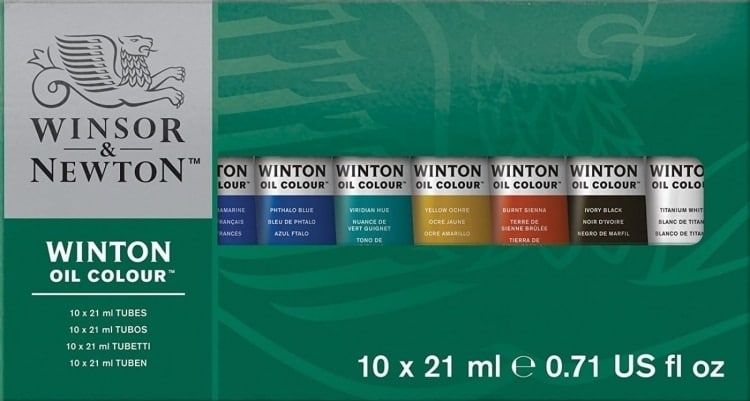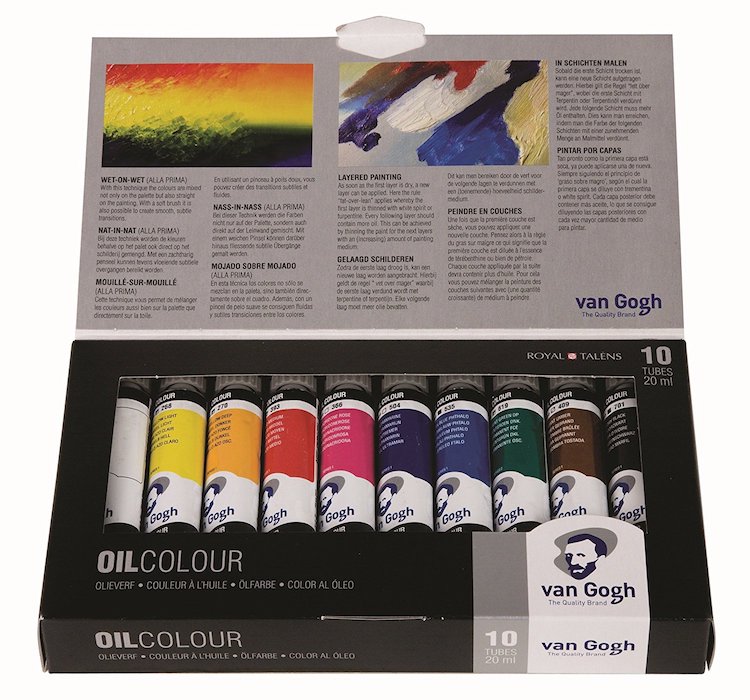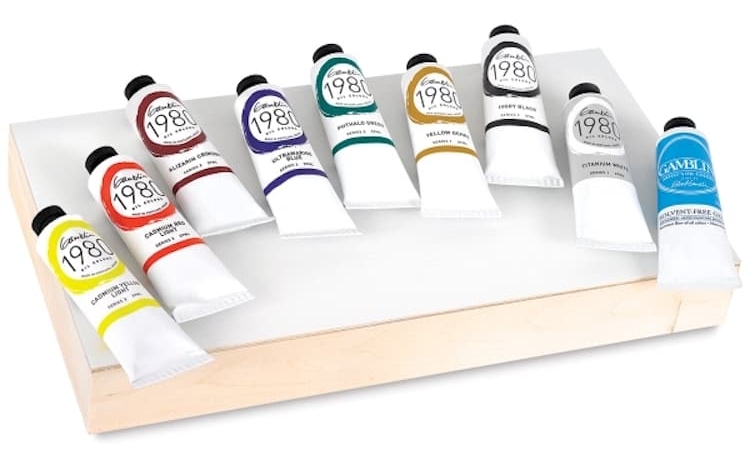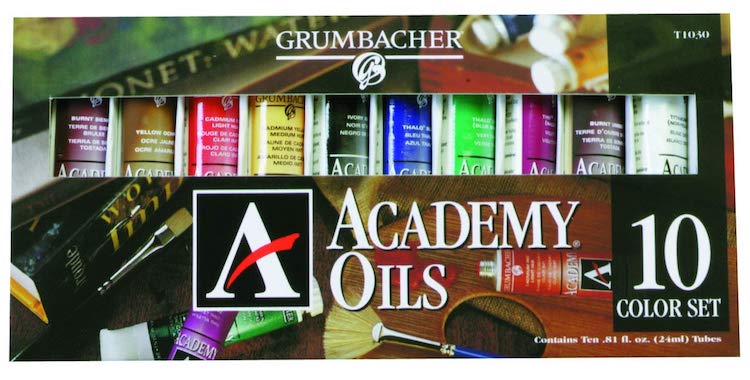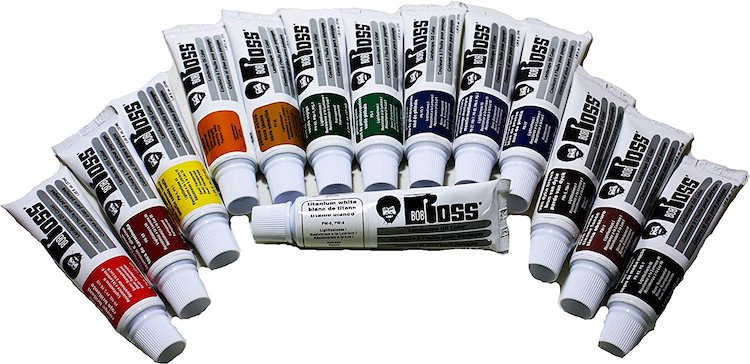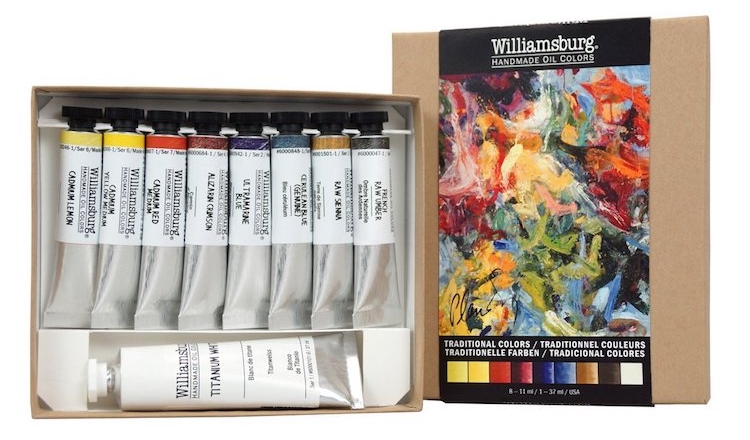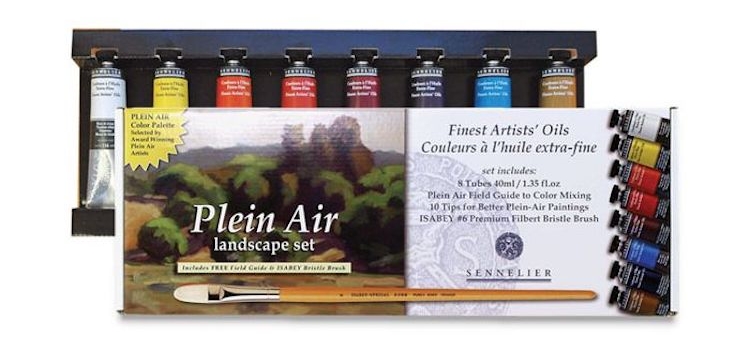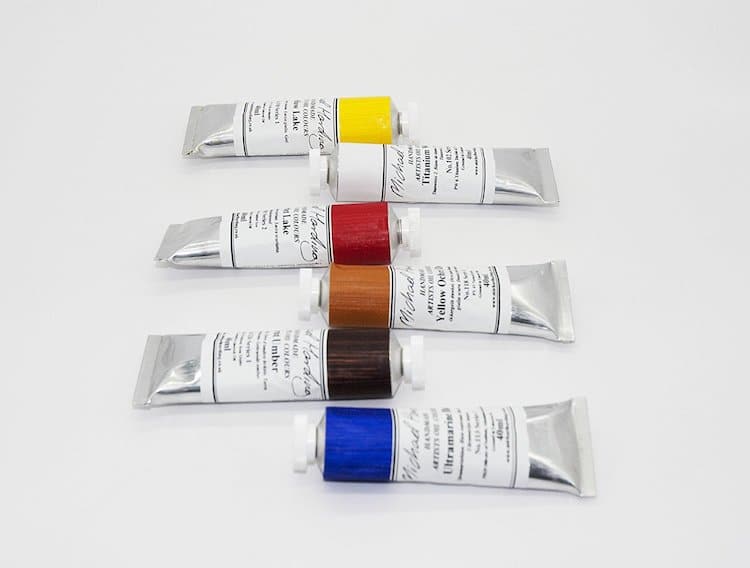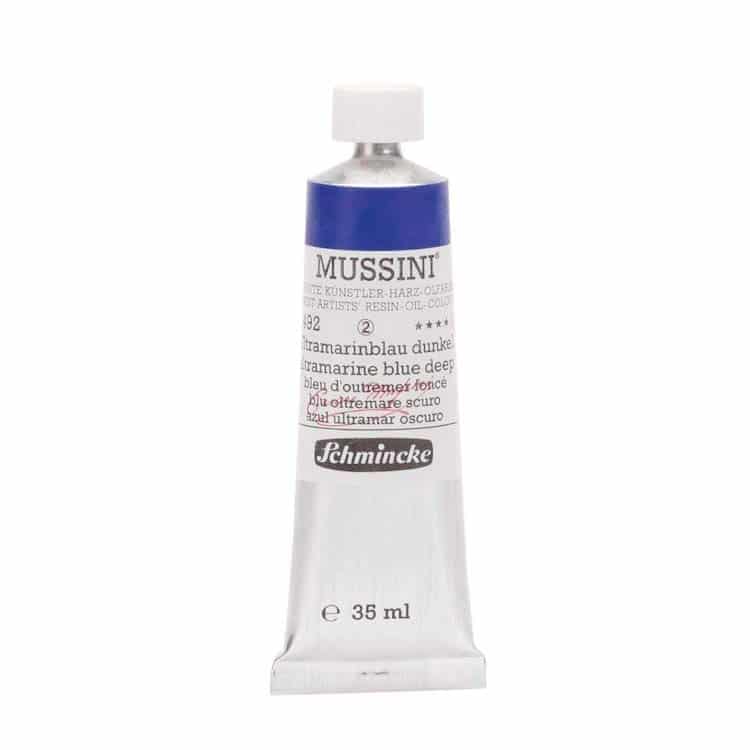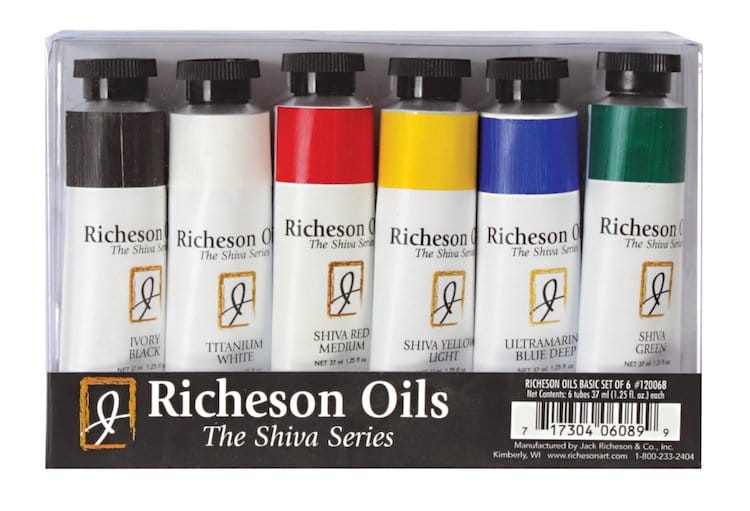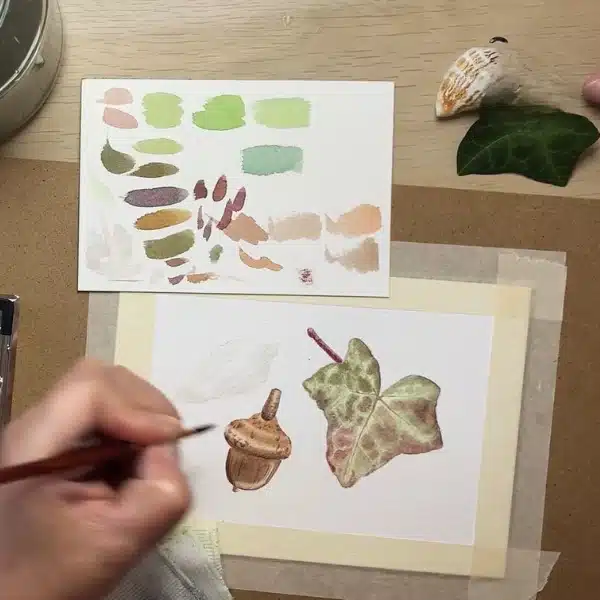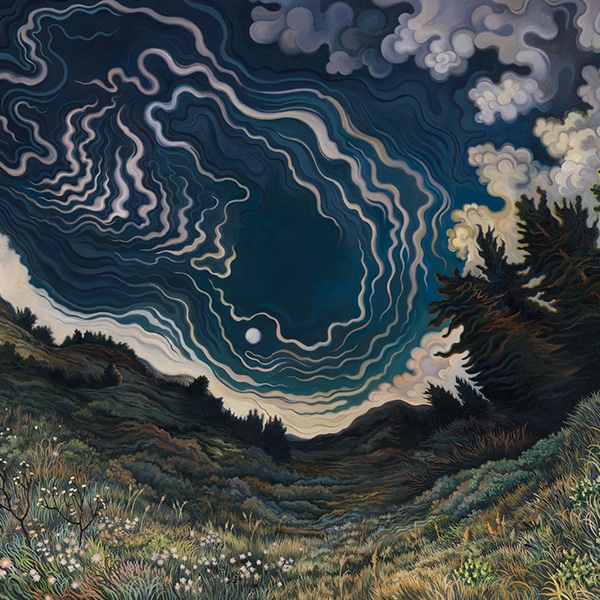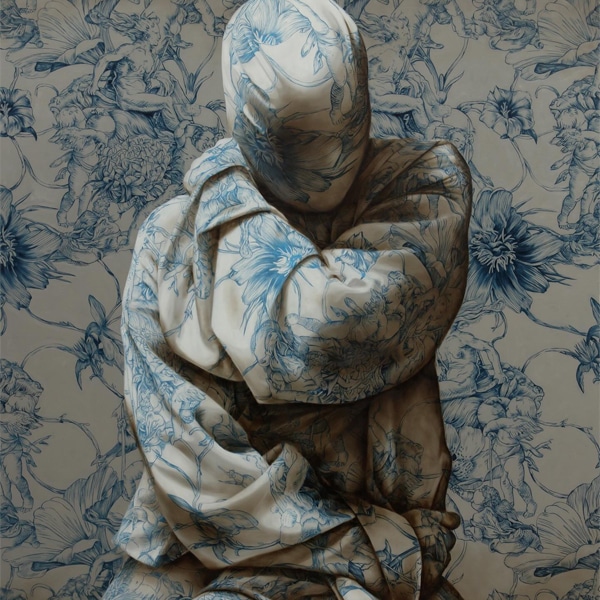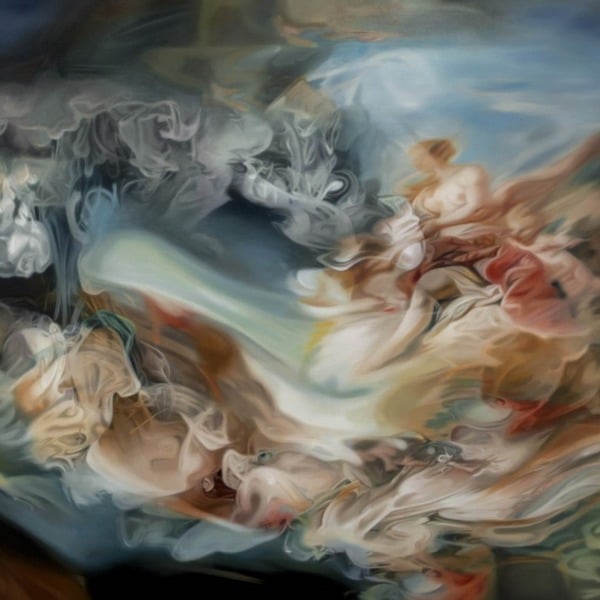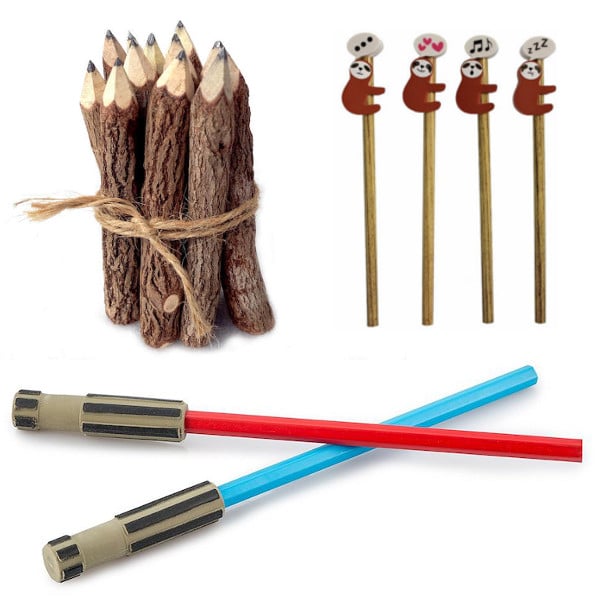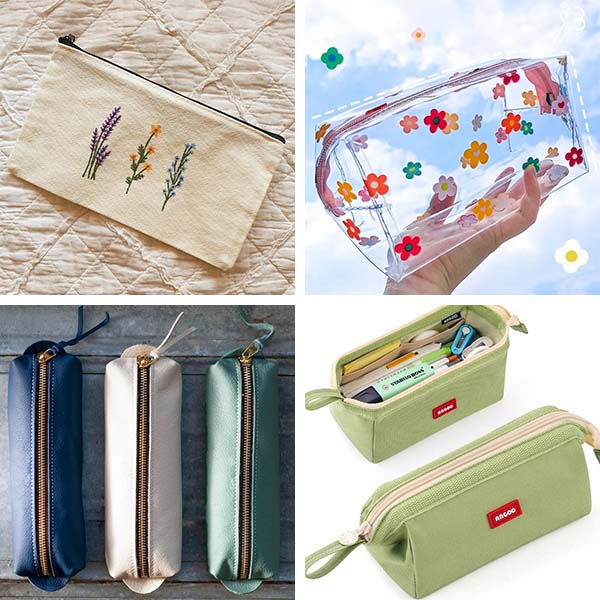
Photo: Stock Photos from Chamille White/Shutterstock
This post may contain affiliate links. If you make a purchase, My Modern Met may earn an affiliate commission. Please read our disclosure for more info.
Whether you've just started painting or are a professional, chances are you've considered using oil paint. From Rembrandt to Monet, oil paint is the hallmark of the Old Masters, its slow drying time allowing artists to manipulate the medium over an extended period. In one form or another, oil paint has existed since ancient Greece, though it came into popular use during the Northern Renaissance.
Consisting of pigments suspended in a drying oil—most often linseed—oil paint can be mixed with different mediums like turpentine to change the consistency and sheen of the paint. Some of the more common natural pigments you'll find are zinc oxide, sienna, umber, and cadmium. As some pigments do have levels of toxicity, it's always wise to take safety precautions, though synthetic pigments have become increasingly reliable in their lightfastness.
While many beginning painters are intimidated by oils, it's a medium that can open up a world of possibilities. From Alyssa Monks' hyperrealistic canvases to Joshua Miels' palette knife portraits, oil paint is one medium that transitions from historical painting to contemporary art without missing a beat.
So if you are thinking about putting down your acrylics in favor of oil paint or are just curious to try a new brand, we've pulled together our list of the best oil paints to get you started on the path to becoming the next Van Gogh.
Looking for other mediums? Check out our guides to the best acrylic paint and best watercolor sets.
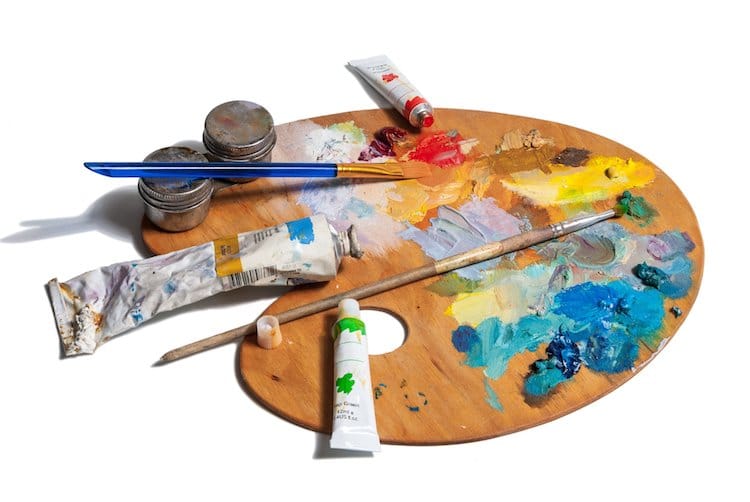
Photo: Stock Photos from Malysh A/Shutterstock
What to Consider When Selecting Oil Paint
Cost
One of the biggest differences between acrylic and oil paint is the cost. Due to the use of pure pigments, you'll find that oil paints are priced at a premium. In fact, you'll quickly notice differences in the prices of tubes depending on which pigment—and how much of it—is inside. When speaking of artist-grade paints, manufacturers will often label their colors on a number or letter scale, with a higher number or letter signifying a higher price due to the type of pigment used.
If you are looking to save on money, student-grade oil paints will give significant savings, but at a price. In order to cut costs, fillers and stabilizers are incorporated with the pigment and oil. While this makes student grade paints cheaper, it can also have an effect on the color, which can sometimes come out murky when mixed. In general, student-grade oil paints use synthetic hues instead of pure pigment, which can lead to discrepancies in color.
Artist-grade oil paints are created to be as vibrant and permanent as possible, with the purest paints made solely of pigment and a binder of linseed—or poppy—oil. While they can be more costly, starting with smaller tubes or a limited color palette will allow you to experiment with professional quality paints without overspending. And because the pigment load is higher, you'll need less paint to get the vibrant colors you're after.
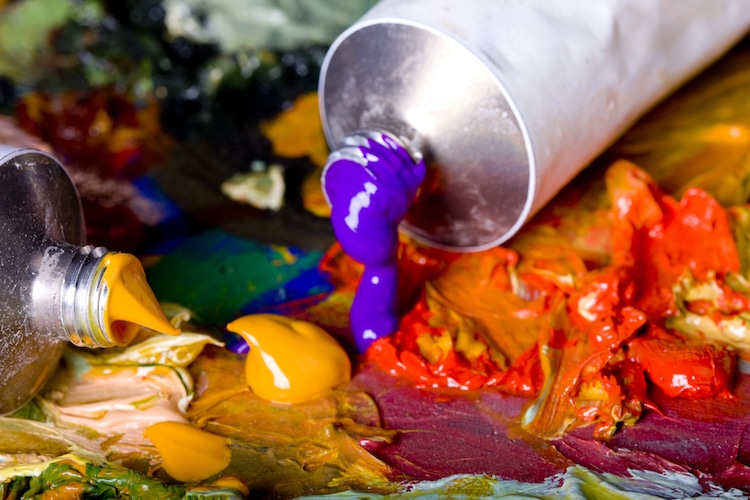
Photo: Stock Photos from worldinmyeyes.pl/Shutterstock
Texture and Consistency
Each brand will have its own unique texture, it's up to the individual artist to decide what works for them. Some oil paints will be buttery and easy to spread with a palette, while others will have a slight grain to them. Each can provide interesting results depending on what you are looking for.
Consistency also makes an impact on drying time. Keep in mind that oil paintings can take anywhere between 3 months and a year for all the layers of a painting to completely dry. Generally, stiffer paints will dry more quickly than runnier paint. Also, keep in mind that certain colors can have longer drying times. For instance, whites tend to take longer to dry, as they are mixed with poppy seed oils. This slower drying oil is used as an alternative to linseed oil, which can yellow over time.
Best Student Grade Oil Paint
Winsor & Newton
Found in almost any art store, Winsor & Newton‘s Winton Oil Colour is the brand's student-grade oil paint. They are priced well for the amount of pigment and also make a great choice if you need a high volume of color. Winton Oil Colours are known for how mixable they are, and they're a nice introduction to oils if you are switching from acrylics. Their 10-tube starter set will provide you with a nice range of colors for most projects—from cadmium red deep hue and french ultramarine to burnt sienna and titanium white. They also have a fast drying time of 2 to 7 days. For a step up, you might also try Winsor & Newton Artists' Oil Colors.
VanGogh
This mid-range line from Van Gogh comes in 66 colors and is known for its high-quality paints even as a student-grade. With consistency on the thinner side, they are specially adapted for those painting in a wet-on-wet style. All of the colors are made with refined linseed oil; while the zinc white and titanium white are produced with safflower oil.
Gamblin 1980
Gamblin is an American paint manufacturer known for its high-quality oils with a focus on safety. For instance, they don't use lead in their white and have a line of solvent-free mediums, which makes it safer to work in the studio. 1980 Oil Color is Gamblin's student grade line, which is another option for those looking for an introduction to oil painting. The range has 40 colors to select from and are creamy and easy to mix with excellent opacity for covering the canvas.
Maimeri
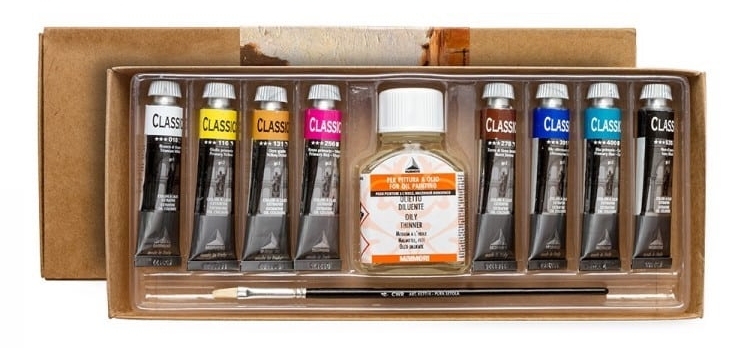
Maimeri | $46.83
Italian brand Maimeri is beloved for its line of top-quality oil paints. This intro set provides everything a student painter needs to get started. All of the paints are made of the best non-toxic pigments and feature fast drying times and excellent lightfastness.
Grumbacher
Since it was founded in 1905, Grumbacher has become a favorite paint brand used by students. Each tube provides a considerable amount of pigment and tint, especially at its low cost. The Academy Oil Set of 10 supplies a beginning oil painter with all of the essential colors they need to start painting.
Best Professional Oil Paints
Bob Ross
Don't be fooled by the name, this isn't a gimmick. Bob Ross oil paints aren't just a fun novelty named after The Joy of Painting master, they're also a great mid-price oil paint option. The pigment load isn't as high as some other artist-grade paints, but they are priced well and available in large, 150 ml tubes. And, of course, the consistency is perfect for Ross' wet-on-wet technique.
Williamsburg
With its thick, gritty consistency and extremely high pigment load, many professional artists swear by Williamsburg. Started by a painter based in Brooklyn in the 1980s, the company was bought by Golden in 2009, but the quality has remained high. Though costly, Williamsburg oil paints are well worth it for their quality of color. As one reviewer notes, “When you want to be able to see expressive brush strokes, it really helps to use one of the best.”
Sennelier
Sennelier has been in operation since 1887 and prides itself on being the paint of choice for artists like Paul Cézanne, Henri Matisse, and Pablo Picasso, as well as many professional painters, today. Sennelier oil paints are made with safflower oil rather than linseed, which gives a satin finish and prevents yellowing. It also increases the drying time slightly. Although they have a high price tag, the quality is among the best. There are 144 colors in the range, and if you ever find yourself in Paris, you can pop into the original Sennelier store just across the street from the Louvre.
Blockx
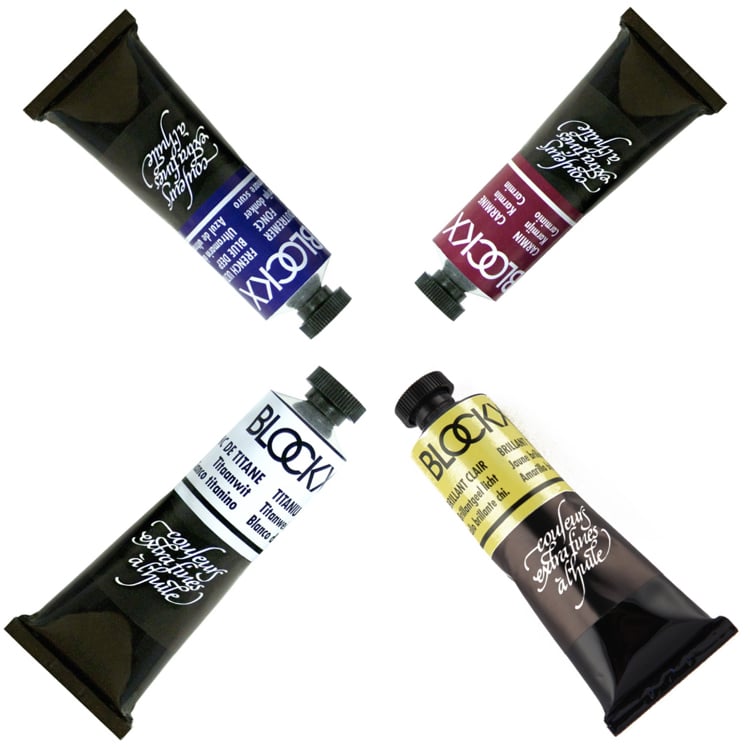
Blockx Oil Paint (35 ml Tubes) | $11.22+
A top-tier oil paint at top-tier prices, Blockx has been manufactured in Belgium since 1865. Hand grinding pigments on stone mills, Blockx paints are known for their buttery consistency and are guaranteed to be perfectly lightfast. Iron oxides, earths, and blacks are made with linseed, while all others are combined with poppy oil to prevent yellowing.
Michael Harding
This British brand was developed by artist Michael Harding in London, with the premium prices reflecting the high pigment load that provides an intense color. The good news is, the lack of fillers means that a tube goes a long way. They also mean that the paint shouldn't flake or crack over time. If you want to dip your toe in the water, try out a single tube and see how it compares. You may never turn back.
Schmincke Mussini
Schmincke Mussini oil paints use a highly traditional resin and linseed oil combination which is said to dry more evenly and prevent wrinkling. They also have a nice range of transparent and semi-transparent colors, which is wonderful for artists who work in glazes.
Old Holland

Old Holland (40 ml Tubes) | $11.79+
One of the most reliable names in oil paint, Old Holland has been around since 1667, making it one of the oldest paint manufacturers, and prides itself on carrying on the heritage of great Dutch masters like Rembrandt and Vermeer. Like Blockx, all their pigments are ground with a stone, which is a big part of the reason for the heavy price tag for these pigment-rich paints. Thick and stiff, the saturation of color is unparalleled.
Jack Richeson
Among the best oil paints for professionals, Jack Richeson paints are known for being affordable without compromising value. In fact, all of the paints are produced in small batches to ensure their high quality. As a result, Richeson Shiva Oils will not darken, yellow, fade, or crack.
This article has been edited and updated.
Related Articles:
15 Best Art Marker Sets for Coloring Enthusiasts and Professional Creatives
17 Best Drawing Pencils for Professionals and Beginners Who Love to Sketch
13 YouTube Channels to Teach You How to Paint for Free
13 Best Colored Pencil Sets for Coloring Book Enthusiasts and Professional Artists
